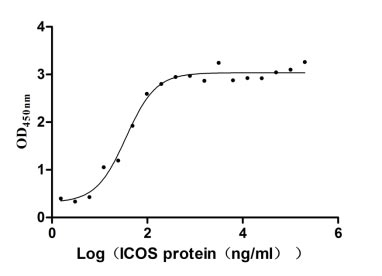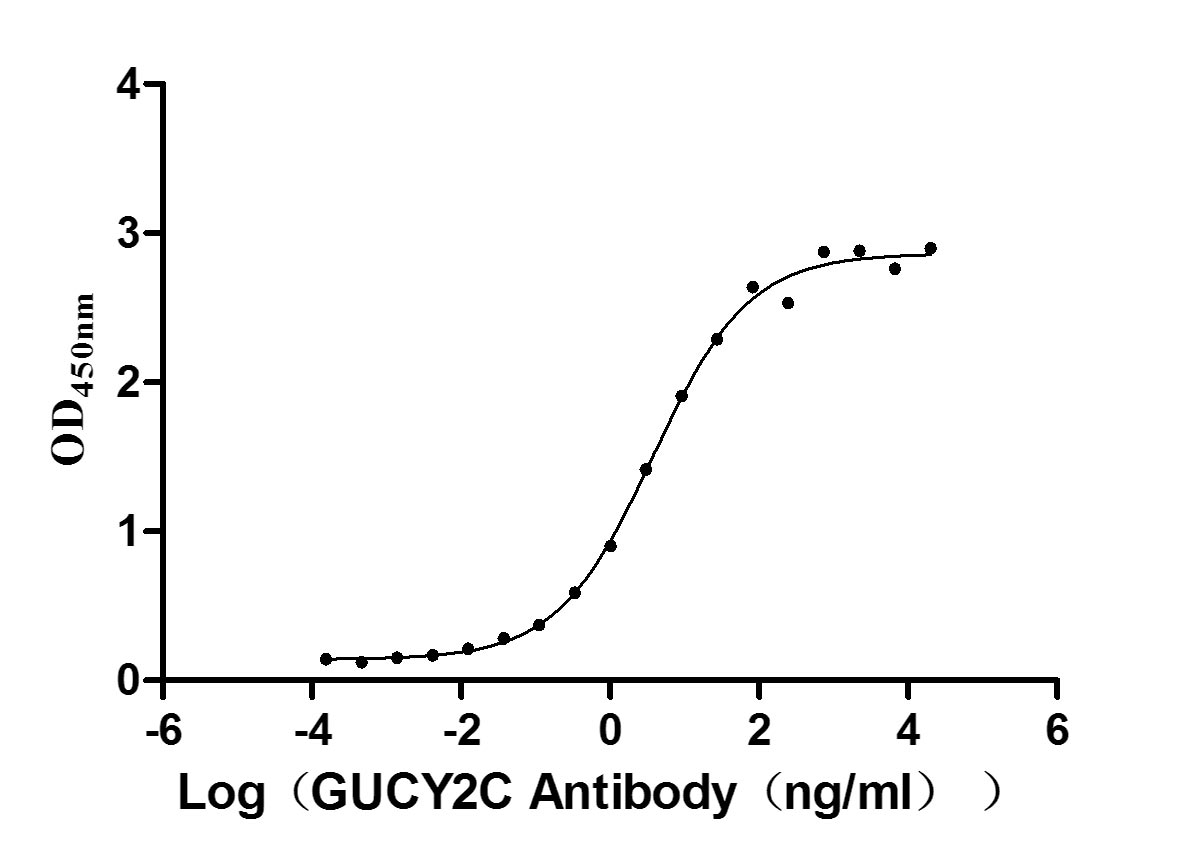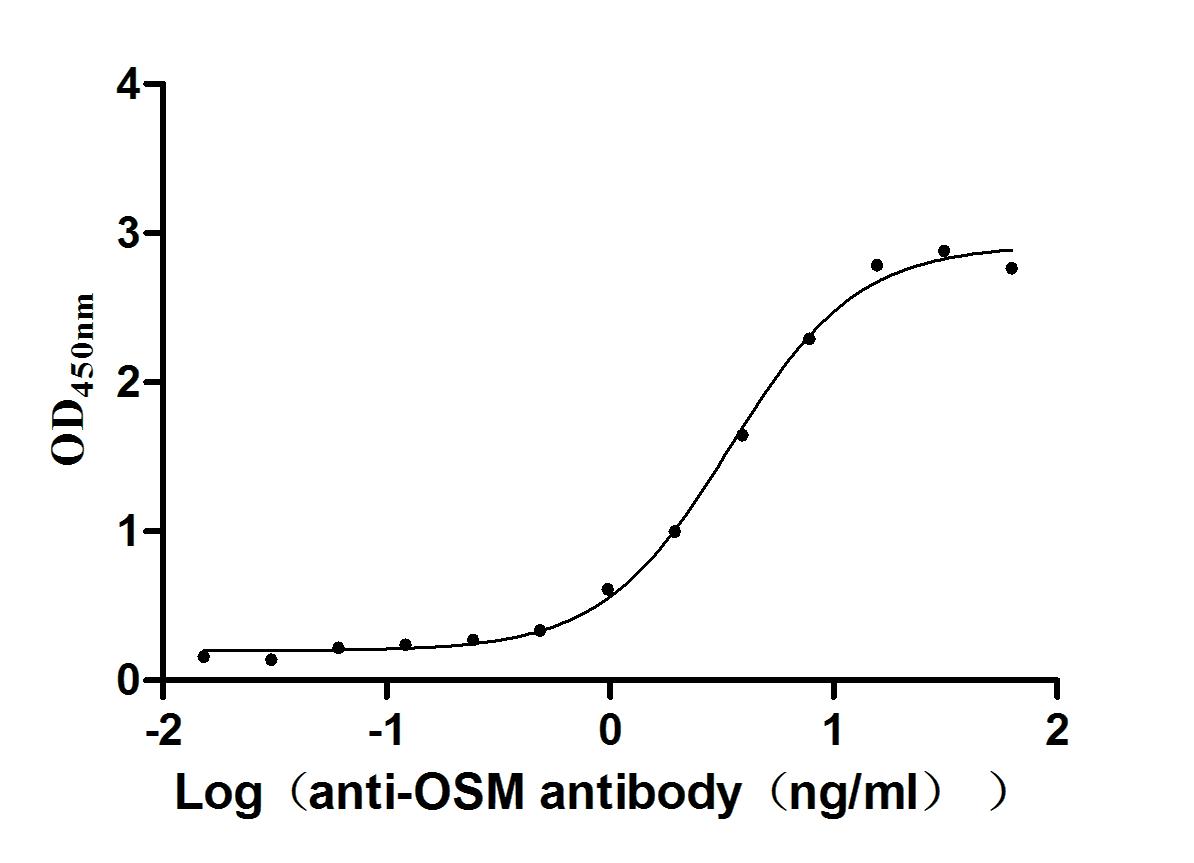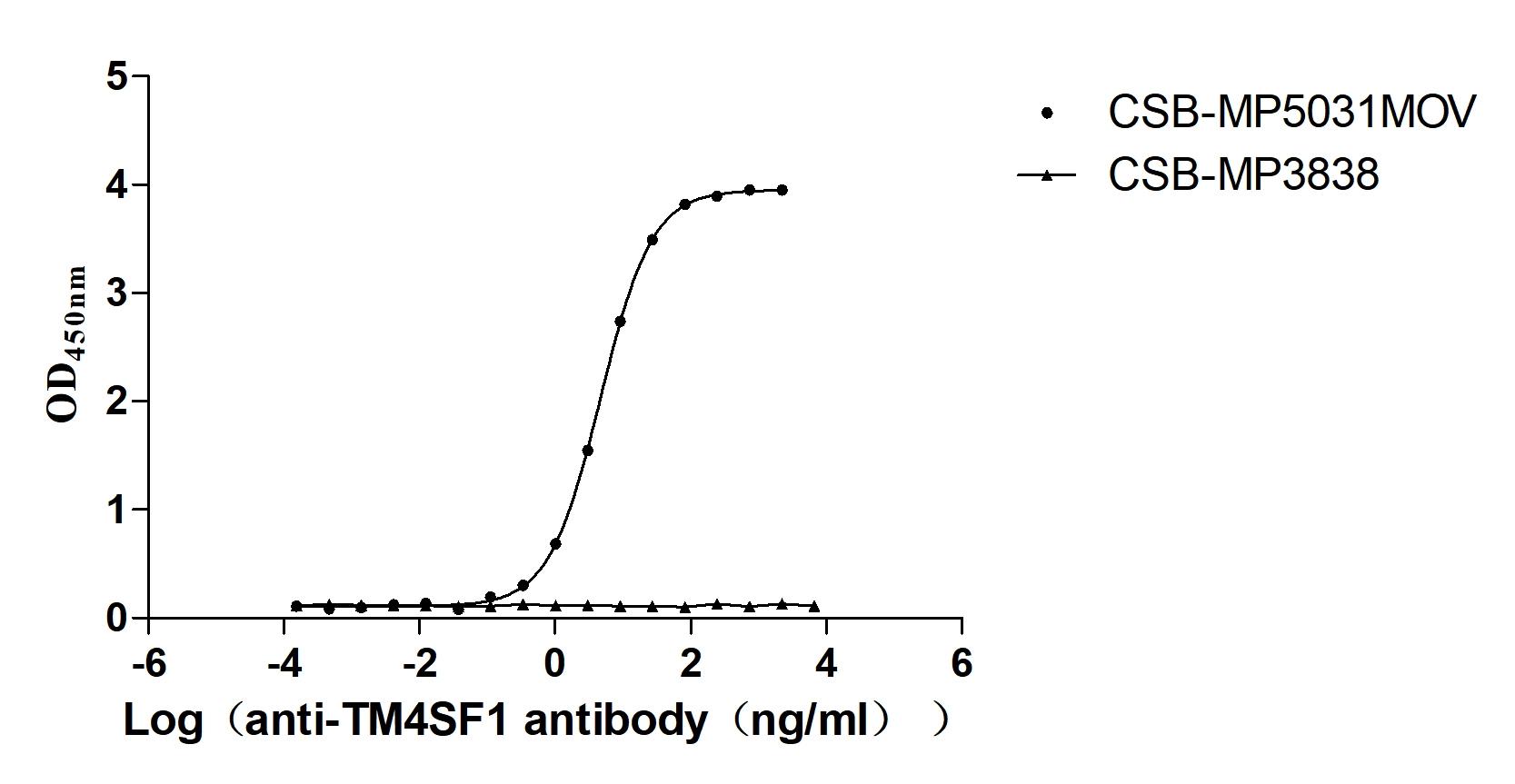Recombinant Saccharomyces cerevisiae Protein transport protein SEC61 (SEC61), partial
-
中文名稱:釀酒酵母SEC61重組蛋白
-
貨號(hào):CSB-YP327181SVG
-
規(guī)格:
-
來源:Yeast
-
其他:
-
中文名稱:釀酒酵母SEC61重組蛋白
-
貨號(hào):CSB-EP327181SVG
-
規(guī)格:
-
來源:E.coli
-
其他:
-
中文名稱:釀酒酵母SEC61重組蛋白
-
貨號(hào):CSB-EP327181SVG-B
-
規(guī)格:
-
來源:E.coli
-
共軛:Avi-tag Biotinylated
E. coli biotin ligase (BirA) is highly specific in covalently attaching biotin to the 15 amino acid AviTag peptide. This recombinant protein was biotinylated in vivo by AviTag-BirA technology, which method is BriA catalyzes amide linkage between the biotin and the specific lysine of the AviTag.
-
其他:
-
中文名稱:釀酒酵母SEC61重組蛋白
-
貨號(hào):CSB-BP327181SVG
-
規(guī)格:
-
來源:Baculovirus
-
其他:
-
中文名稱:釀酒酵母SEC61重組蛋白
-
貨號(hào):CSB-MP327181SVG
-
規(guī)格:
-
來源:Mammalian cell
-
其他:
產(chǎn)品詳情
-
純度:>85% (SDS-PAGE)
-
基因名:SEC61
-
Uniprot No.:
-
別名:SEC61; YLR378C; L3502.5; Protein transport protein SEC61; Sec61 complex subunit SEC61; Sec61 complex subunit alpha
-
種屬:Saccharomyces cerevisiae (strain ATCC 204508 / S288c) (Baker's yeast)
-
蛋白長度:Partial
-
蛋白標(biāo)簽:Tag?type?will?be?determined?during?the?manufacturing?process.
The tag type will be determined during production process. If you have specified tag type, please tell us and we will develop the specified tag preferentially. -
產(chǎn)品提供形式:Lyophilized powder
Note: We will preferentially ship the format that we have in stock, however, if you have any special requirement for the format, please remark your requirement when placing the order, we will prepare according to your demand. -
復(fù)溶:We recommend that this vial be briefly centrifuged prior to opening to bring the contents to the bottom. Please reconstitute protein in deionized sterile water to a concentration of 0.1-1.0 mg/mL.We recommend to add 5-50% of glycerol (final concentration) and aliquot for long-term storage at -20℃/-80℃. Our default final concentration of glycerol is 50%. Customers could use it as reference.
-
儲(chǔ)存條件:Store at -20°C/-80°C upon receipt, aliquoting is necessary for mutiple use. Avoid repeated freeze-thaw cycles.
-
保質(zhì)期:The shelf life is related to many factors, storage state, buffer ingredients, storage temperature and the stability of the protein itself.
Generally, the shelf life of liquid form is 6 months at -20°C/-80°C. The shelf life of lyophilized form is 12 months at -20°C/-80°C. -
貨期:Delivery time may differ from different purchasing way or location, please kindly consult your local distributors for specific delivery time.Note: All of our proteins are default shipped with normal blue ice packs, if you request to ship with dry ice, please communicate with us in advance and extra fees will be charged.
-
注意事項(xiàng):Repeated freezing and thawing is not recommended. Store working aliquots at 4°C for up to one week.
-
Datasheet :Please contact us to get it.
靶點(diǎn)詳情
-
功能:Part of the Sec61 complex, which is the major component of a channel-forming translocon complex that mediates protein translocation across the endoplasmic reticulum (ER). The functional states of the translocon complex include co- and post-translational ER import, cotranslational membrane protein integration and retrograde transport of misfolded proteins out of the ER. In the cotranslational pathway, ribosomes synthesizing presecretory proteins are targeted to the translocon by the cytosolic signal recognition particle (SRP) and its ER-localized receptor. The association of the Sec61 complex with the ribosome is mediated by the 28S rRNA of the large ribosomal subunit. SRP-independent post-translational translocation requires the association of additional factors, such as the Sec62/63 complex and KAR2. In an initial step, the signal sequence seems to bind simultaneously to SEC61 and SEC62. A cycle of assembly and disassembly of Sec62/63 complex from SEC61 may govern the activity of the translocon. SEC61 mediates the association with the ribosome.
-
基因功能參考文獻(xiàn):
- Increased endoplasmic reticulum glutathione import triggers H2O2-dependent Bip oxidation through Ero1 reductive activation, which inhibits glutathione import in a negative regulatory loop. PMID: 28918898
- These data suggest that the interaction between the proteasome 19S regulatory particle and the Sec61 channel is essential for the export of specific substrates from the endoplasmic reticulum to the cytosol for proteasomal degradation. PMID: 25658429
- To map key residues in TM2b and TM7 in yeast Sec61 that modulate lateral gating activity, we performed alanine scanning and in vivo site-directed photocross-linking experiments. PMID: 24753257
- Loop 7 of Sec61 is required for initiation of posttranslational soluble protein import into and misfolded soluble protein export from the endoplasmic reticulum, suggesting a key role for L7 in transverse gating of the Sec61 channel. PMID: 24314051
- A functional asymmetry exists within the SEC61 translocon caused by the residues forming the central constriction in the translocation pore. PMID: 24191046
- are consistent with a Sec61 requirement for peroxisome formation PMID: 22212716
- these results demonstrate a novel Sec61 point mutation that clearly implicates the 4th ER luminal loop of this protein in the ERAD process PMID: 23044417
- CaM binding to the cytosolic N-terminus of Sec61alpha is involved in limiting Ca(2+)-leakage from the ER in C. familiaris but not S. cerevisiae. PMID: 21558796
- Sec61 post-translational translocation is dependent on assembly with Sss1p complexes. PMID: 21355855
- Sec61 complexes from yeast S. cerevisiae and C. familiaris both displayed conformable characteristics of a highly dynamic channel in an intrinsically open state. PMID: 20450886
- Data suggest that mutations in cytoplasmic loops six (L6) and eight (L8) of sec61 affect different steps in the cotranslational translocation pathway. PMID: 15631991
- The results suggest that the plug is unlikely to be important for sealing the translocation pore in yeast but that it plays a role in stabilizing Sec61p during translocon formation. PMID: 16822836
- The proteasome interaction with the Sec61 channel in the endoplasmic reticulum was characterized. PMID: 17264153
- similar correlation between topology defects and prl phenotype was also seen with previously identified yeast Sec61 mutants PMID: 17893139
- The substrate protein forms a disulfide-linked complex to Sec61p, suggesting that at least part of the retrotranslocation process involves Sec61p. PMID: 18573918
- analysis of how Sec61p is required for ERAD-L, and interactions of Sec61P and CPY PMID: 18819915
- Hrd3p, which is part of the Hrd-Der ubiquitin ligase complex, and other core components of the endoplasmic reticulum-associated degradation machinery physically interact with Sec61p. PMID: 19696741
- The beta-subunit of Sec61 protein interacts with ER-resident reticulon protein complexes. PMID: 19857245
顯示更多
收起更多
-
亞細(xì)胞定位:Endoplasmic reticulum membrane; Multi-pass membrane protein.
-
蛋白家族:SecY/SEC61-alpha family
-
數(shù)據(jù)庫鏈接:
KEGG: sce:YLR378C
STRING: 4932.YLR378C
Most popular with customers
-
Recombinant Human ICOS ligand (ICOSLG), partial (Active)
Express system: Mammalian cell
Species: Homo sapiens (Human)
-
Recombinant Human Heat-stable enterotoxin receptor (GUCY2C), partial (Active)
Express system: Mammalian cell
Species: Homo sapiens (Human)
-
Recombinant Human V-set and immunoglobulin domain-containing protein 4 (VSIG4), partial (Active)
Express system: Mammalian cell
Species: Homo sapiens (Human)
-
Recombinant Human Oncostatin-M (OSM), partial (Active)
Express system: Mammalian cell
Species: Homo sapiens (Human)
-
Recombinant Human Killer cell immunoglobulin-like receptor 3DL2 (KIR3DL2), partial (Active)
Express system: Mammalian cell
Species: Homo sapiens (Human)
-
Recombinant Macaca fascicularis Transmembrane 4 L6 family member 1 (TM4SF1)-VLPs (Active)
Express system: Mammalian cell
Species: Macaca fascicularis (Crab-eating macaque) (Cynomolgus monkey)

















